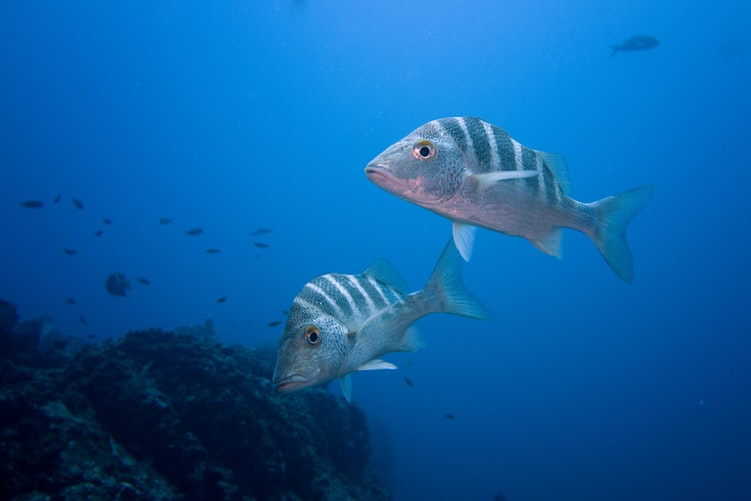Quality tuna is that caught one at a time. Tuna is a wonderful dish for its immense health benefits for everyone. You will obviously meet various tuna brands on the supermarket shelves. However, you don’t just pick any tuna product without minding its source. Sustainability of tuna species and dolphins are strong concerns for everyone who enjoys seafood. There is a strong concern for tuna overfishing making it extremely important to stick to sustainably sourced tuna.
Pole and line caught tuna
This is an ancient fishing method to catch tuna. Fortunately, pole and line is the dominant fishing method to catch tuna in the Maldives. This makes tuna from the Maldives the most sustainable choice on the market. Pole and line fishing is free from bycatch issues common with other commercial fishing methods like purse seines. These fishing methods accidentally snare and kill tons of various marine organisms annually. Pole and line fishing is labor-intensive creating various jobs in the local fishing community.
Buying quality tuna
Supermarkets usually have various tuna brands on the shelves. However, it is important to understand the quality of tuna from the rest. A benchmark for quality tuna is pole and line fishing method on the label. Quality brands understand the importance of sustainability and can’t miss indicating that their tuna is caught through this sustainable method. This is what separates tuna from wild sources from farmed one.
Sustainability of pole and line fishing
The Maldives is home of the best tuna fish exporters on the market who emphasize sustainability in all their operations. These tuna processing companies support local fishermen who carry out fish and line fishing. This requires a group of fishermen standing shoulder to shoulder on a fishing boat. Each fisherman holds a long pole strung with a line and lure. The poles are cast into the ocean to catch simmering tuna before jerking it out of the water one by one on the boat. It is a thrilling experience as tuna start flying through the air.
Fishermen catch tuna one at a time while pulling it on the boat right away. This lessens chances of accidentally hooking sea turtles, sharks, dolphins, or diving seabirds. The unfortunate ones that get caught on the hooks are set free before drowning. The tuna is then placed in iceboxes on the boats supplied by the fish exporting company. This preserves the freshness of the fish before it is transported in refrigerated trucks to the processing plant.
Pole and line vs. commercial fishing methods
Longlines and gillnets are prone to a lot of bycatch. The fishers are likely to catch various sea organisms unintended. Keep in mind that it might take long to realize the bycatch causing multiple deaths. Additionally, there is a likelihood of discarding much of the catch as waste. Alternatively, the pole and line method is cleaner with fewer chances of bycatch at less than one percent in the Maldives.
Type of tuna caught
There are seven commercially important tuna species including:
- Albacore
- Bigeye
- Skipjack
- Yellowfin
- Atlantic bluefin
- Pacific bluefin
- Southern bluefin
Pole and line method is used in the Maldives to catch the healthy stocks of yellowfin tuna. This makes tuna caught through this method the most sustainable. One fishing areas in other parts of the world overfish yellowfin and bigeye tuna. This has created a great concern to protect these tuna species from extinction. A strong case is bluefin tuna on the brink of extinction for the popularity of sushi.
Benefits of the Maldives fishing industry on sustainability
Sticking to tuna from the Maldives will save you from the daunting task of choosing quality and sustainable tuna. Pole and line fishing in the Maldives has been practiced for centuries and the dominant fishing method in the local fishing industry. The fishing profession here is a great job and always runs in the family. In addition, the operations of groups of local fishermen ensure a regular supply of sustainable tuna on the world market.
Dangers of bycatch
Purse seine and gillnets are used by commercial fishing vessels across the world but with high chances of bycatch. These methods are deadly for species like silky sharks. These are slow breeding fish-eating sharks that hunt near fishing nets making them prone to ending up in bycatch. Much of the silky sharks are caught in purse seines worldwide.
Additionally, dolphins are also under threat of commercial fishing methods. Many die when herded into nets in the process of catching yellowfin tuna. Only pole and line fishing ensure the safety of dolphins, sea turtles, seals, and albatross.
Conclusion
The best tuna for your consumption should promote the sustainability of the species and other organisms. Fortunately, Maldives tuna is caught through pole and line by local fishermen with fewer chances of bycatch. This ensures a regular supply of this delicious and healthy seafood.



